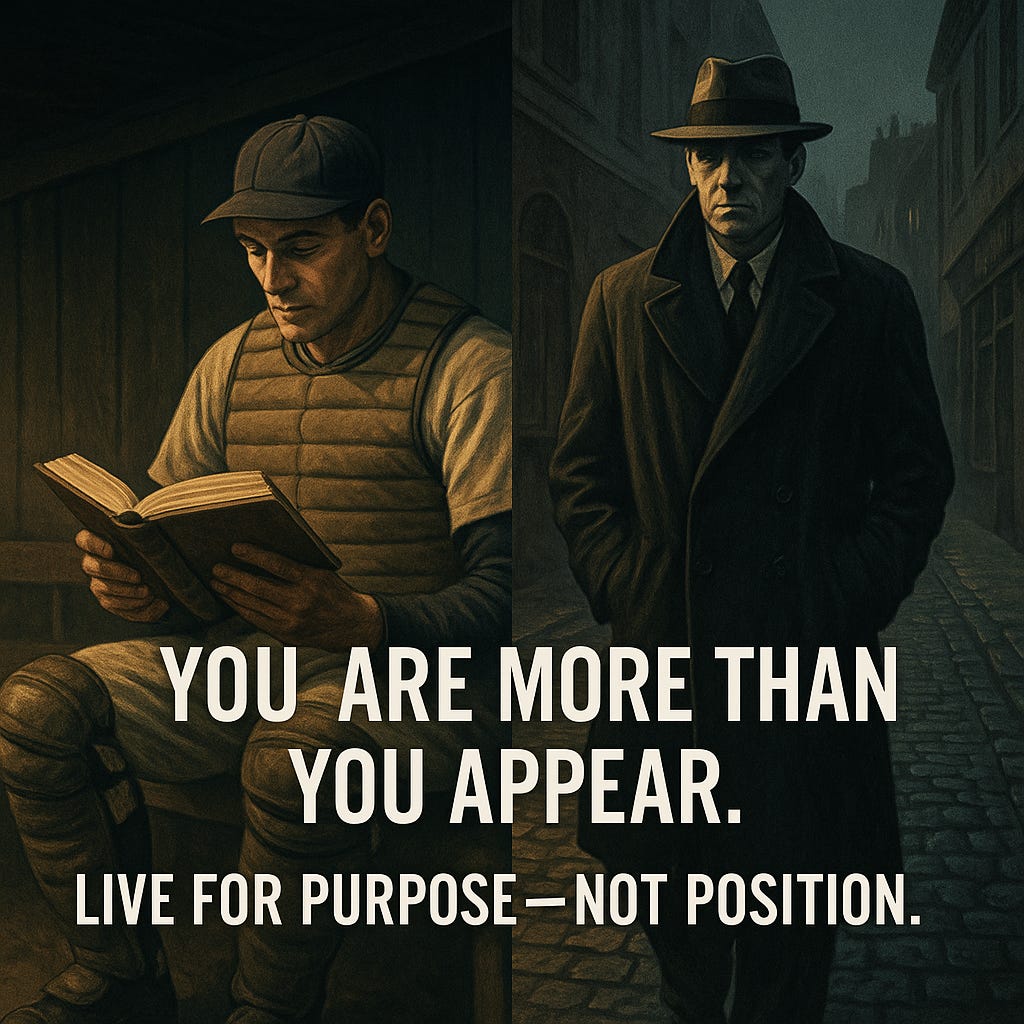More Than You Appear
The Man in Disguise
“The lion doesn’t turn around when the small dog barks.”
– African Proverb
More Than You Appear
Moe Berg wore a catcher’s mask, but that wasn’t his real disguise. Berg was a Major League backup catcher—quiet, observant, unremarkable in the scorebook. If you saw him in the dugout, you might have missed him. He’s also one of the most intriguing figures in history.
Moe Berg wasn’t just a ballplayer. He was a scholar, a polyglot, and eventually a government employee. The most impactful people can be hidden in plain sight. We sometimes say, “Don’t judge a book by its cover.” This was Moe Berg.
Born to Jewish immigrants in New Jersey, Berg defied labels all his life. He graduated from Princeton, earned a law degree from Columbia, and spoke over ten languages fluently. He once read The New York Times in Sanskrit—for fun.
And, he spent 15 years as a backup catcher in the big leagues. He wasn’t flashy or a star in any way. His skills were observation, thought, pattern recognition, and planning. Baseball insiders didn’t quite know what to make of him. One famously said: “He can speak twelve languages—but he can’t hit in any of them.”
They underestimated him. Just about everyone did. Just as Moe Berg wanted it—he didn’t want any attention. He played for something different—something he couldn’t talk about. He was a United States spy.
As World War II intensified, the United States needed intelligence officers—people who could blend in, stay quiet, and think several steps ahead. Moe Berg was precisely that. Berg was recruited by the Office of Strategic Services (OSS), the predecessor to the CIA. His assignments were delicate and dangerous.
Berg visited Japan in 1934 as part of a Major League Baseball all-star goodwill tour, which included players like Babe Ruth and Lou Gehrig. He served in a reserve role, but his ability to speak Japanese made him valuable behind the scenes. While in Tokyo, Berg dressed in a kimono and surreptitiously climbed to the top floor of one of the city's tallest buildings, carrying a concealed camera. From there, he filmed panoramic footage of the Tokyo skyline, focusing especially on industrial and military targets such as shipyards, power stations, and harbor facilities. This footage is believed to have been used for the initial raids on Japan after the attack on Pearl Harbor.
Years later, with WWII underway, he slipped through occupied Europe gathering intelligence, assessing how close Nazi scientists were to building an atomic bomb. One mission took him to a scientific conference in Switzerland, where Nazi physicist Werner Heisenberg was speaking. Berg carried a pistol and clear orders:
If Heisenberg indicated the Nazis were close to a bomb, Berg was to shoot him on the spot.
From backup catcher to spy—Moe Berg was never what he appeared to be. It’s a challenge for us and how we see the world around us. We so often judge people by titles, roles, stats, etc.
We assume loud means strong, that starters matter more than subs, and that leadership must come from the front of the room. However, some of the most valuable people on your team may not look the part. They may sit quietly in the background, processing, planning. And that teammate might be you.
Berg could have pursued a very different path. He had the smarts to do about anything. But when the world was at war, he chose service over self—he believed in doing what mattered, not what was recognized or praised … an example for all of us.
“There are no ordinary people.”
– C.S. Lewis
Connecting this quote to the story. Even the quietest among us may be doing the most.
This week’s Chasing Influence tip: Make it your goal to be valuable, not visible.
If you enjoyed this story, a series of three Chasing Influence workbooks is available. Stories are accompanied by discussion questions and answers. Each workbook contains 33 lessons to use with any team.
Updates on Chasing Influence
Chasing Influence: Transformational Coaching to Build Champions for Life is available in Kindle, softcover, hardcover, and audiobook editions.
For additional resources, links to podcast appearances, and other Chasing Influence news, click here.
©Troy Urdahl, 2025


